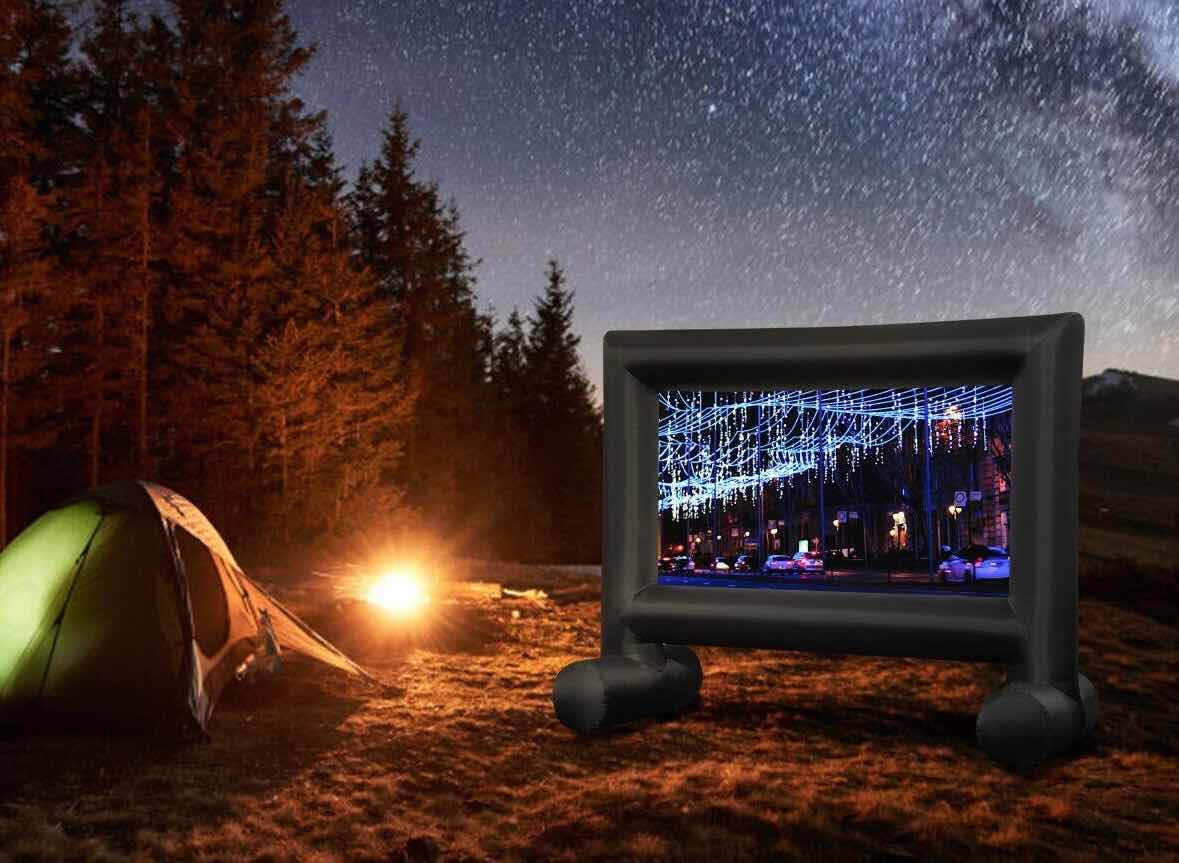
Having a projector means you can watch everything on the biggest screen imaginable, inside or outside your home. Most projectors are versatile enough to be used inside and outside if you keep them under a covered area, but you’ll have a very different experience when using your projector outside as opposed to in your living room. That’s where knowing the difference between an indoor or outdoor projector screen is important.
Differences between indoor and outdoor projector screens
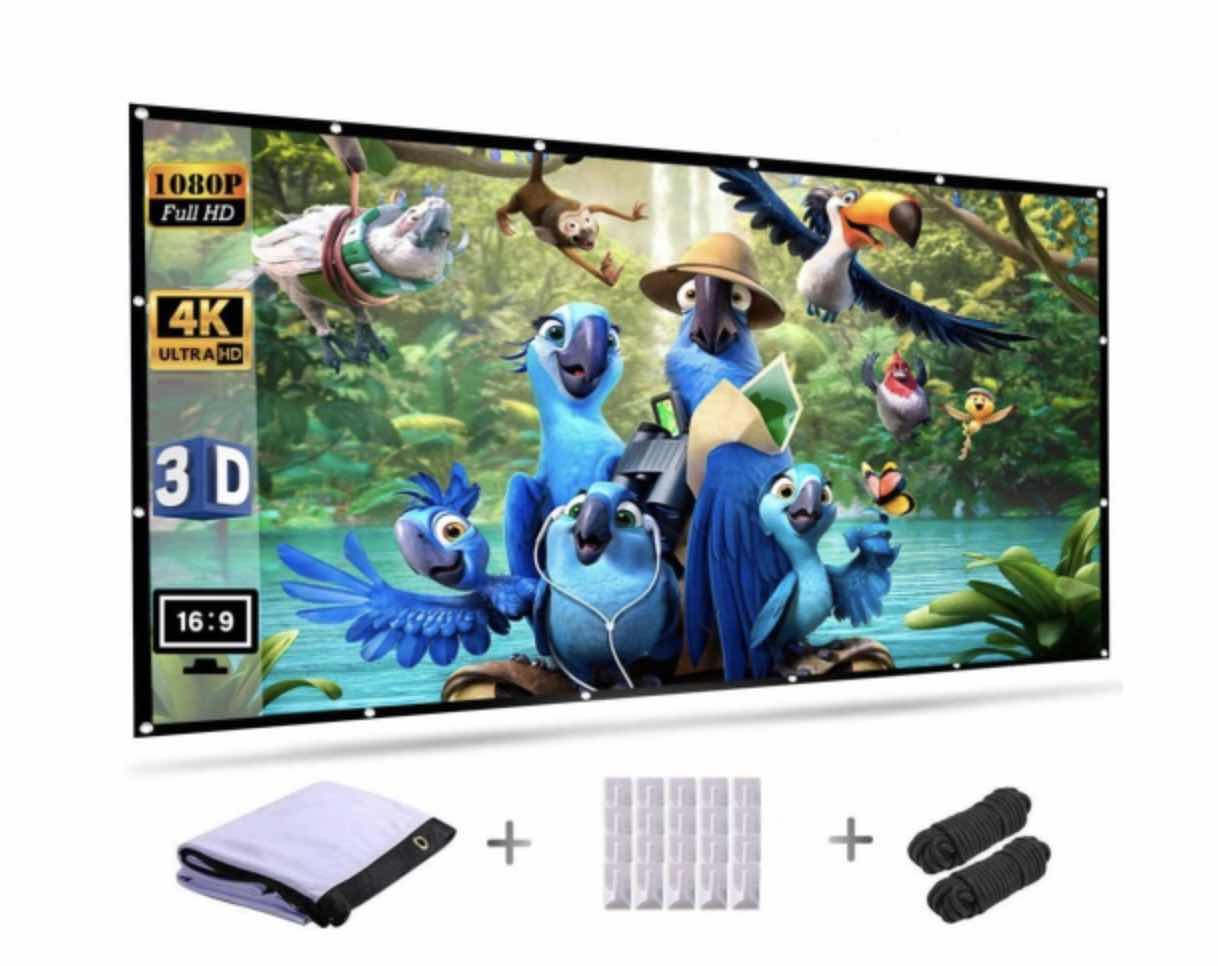
If you looked at indoor and outdoor projector screens side by side, you might not notice a big difference. They can look so much alike that you might be tempted to bring your indoor projector screen outside to use for movie nights or a family get-together. While you could use an indoor projector screen outside and there are some that are designed for inside and outside use, you may find you won’t have the same viewing experience watching outside as you would inside.
The key differences between an indoor vs an outdoor projector screen come down to the colour of the projector screen, screen gain, screen type, and weatherproofing. Let’s take a closer look at each.
Screen gain on indoor vs outdoor projectors screens
Projector brightness is measured in terms of lumens. A higher lumen number on your projector means your projector can produce a brighter image, and the light that’s reflected back at the person watching the image is called screen gain. Screen gain can be enhanced even further with the right projector screen.
Unlike an indoor space where you can pull the curtains and turn down the lights, outside light can only be somewhat controlled at night. That’s why outdoor projector screens are usually high-gain screens. They have a coating that makes projected images noticeably brighter in an outside space. These screens can reflect back more light than some types of indoor projector screen, and your images will look brighter and more colourful on an outdoor high-gain projector screen.
There is also ambient light rejecting screens (ALR) that offer a vibrant image in a bright space. People choose this type of screen for outside use because it will increase the colour and contrast when watching in brighter light.
Screen colour on an indoor vs outdoor projector screen
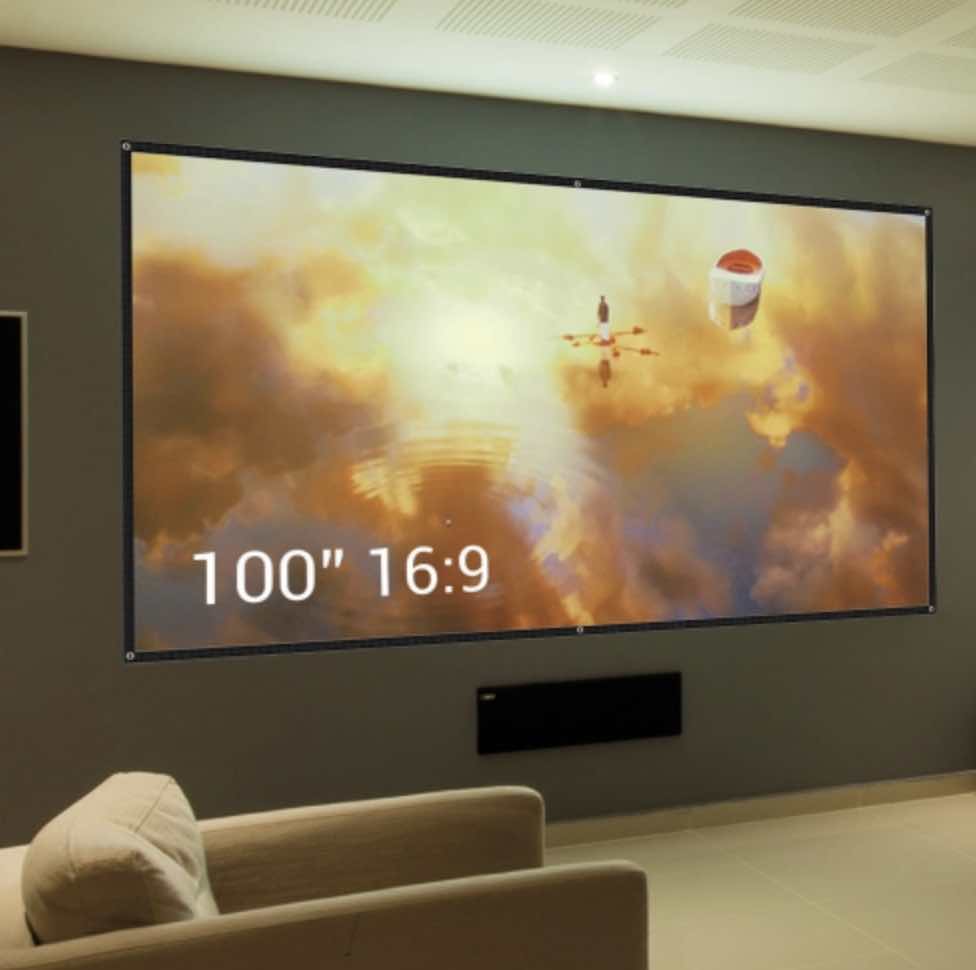
The colour of your projector screen will have a big impact on how bright your images are when you’re watching outside. That’s why so many indoor projector screens are white. A white screen is a good choice if you can control the ambient light in the room, but when you use a white screen outside with the same projector, you could end up with a washed-out image that looks dull.
The best outdoor projector screens are high contrast screens in grey or black. The dark colour improves colour and contrast in outdoor spaces where light can’t be controlled.
Should you get a fixed or a portable outdoor projector screens?
When you use a projector indoors in one dedicated room, you’ll most likely mount your projector screen or choose a screen that’s on a stand but still stays in one spot. With an outdoor projector screen, you have a few projector screen types to choose from including fixed, mountable screens or portable projector screens.
If you’d like a portable outdoor projector screen, you’ll be able to choose a screen on a stand that folds up easily and is stored in a bag so you can transport it. There are also inflatable outdoor projector screens made from vinyl or other weather-resistant materials. Some types of inflatables come with a blower you can use to quickly inflate and deflate the screen.
A fixed outdoor projector screen will mount to your outside wall or rafters. This is the type of outdoor screen that’s more permanent, although you may wish to bring it inside during the winter.
Recommended screen size for outdoor projector screens
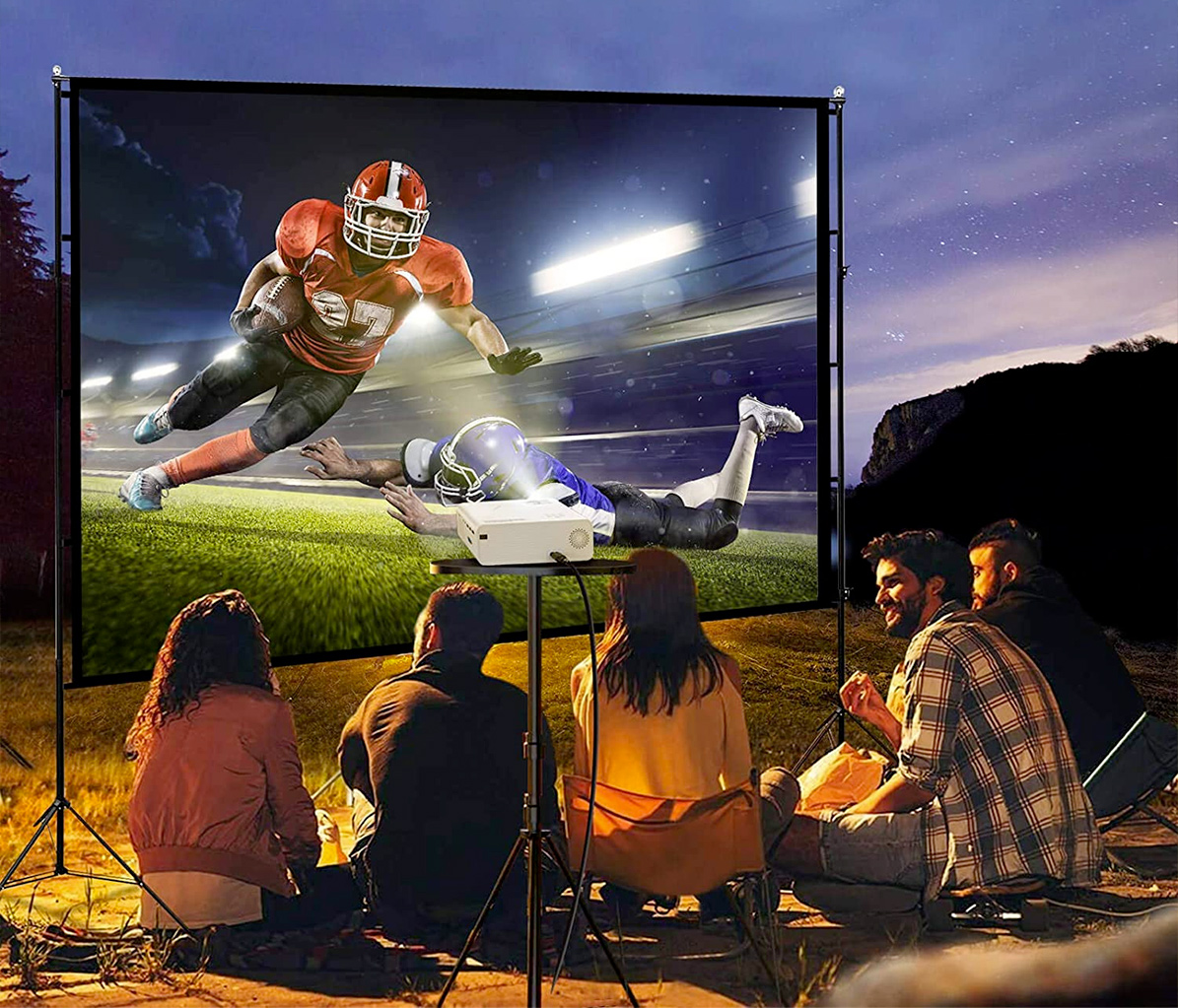
When you choose an outdoor projector you are only limited by how big of an image your projector can produce. If you have a small indoor projector screen because you’re limited by wall space but your projector can produce images up to 120 inches or larger, you may be excited to choose a very large outdoor projector screen.
Just keep in mind that, even if your projector can produce images up to a certain size, you’ll need to have a certain number of lumens to produce the best image in a large format. The minimum lumens to produce a small image outside is 3000, so if you’d like to have a big screen you’ll want to use a projector that’s 4500 lumens or higher.
Average size of outdoor projector screens
The average size for an outdoor projector screen is 120 inches, but you can find outdoor screens as large as 300 inches wide. If your projector is capable and you’re hosting an outdoor movie night, a lot of people opt for a screen that’s 150 inches or larger. If you’re using your projector for work or travel and you need a portable screen, the average size is approximately 100 inches. The average aspect ratio on an outdoor projector screen, the ratio of the width of the screen to its height, is 16:9.
In comparison, the average size for an indoor projector screen is 100 inches or smaller unless you have a short-throw or ultra-short-throw projector that doesn’t require you to place the projector a long distance from the screen. You can read more about how far your projector should be from your screen in how to set up your home projector.
Weatherproofing on outdoor projector screens
When you’re watching movies on your projector and you’re inside your house, you don’t have to worry about rain or a gust of wind blowing your screen down. Outside projector screens are exposed to the elements, so they are designed with weatherproofing that helps them stand up to the great outdoors. Some types of outdoor projector screens have ropes and stakes you bury in the ground to anchor the screen. Other types use weights to weigh down the screen to prevent it from blowing away.
Setting up an outside projector screen vs an indoor projector screen
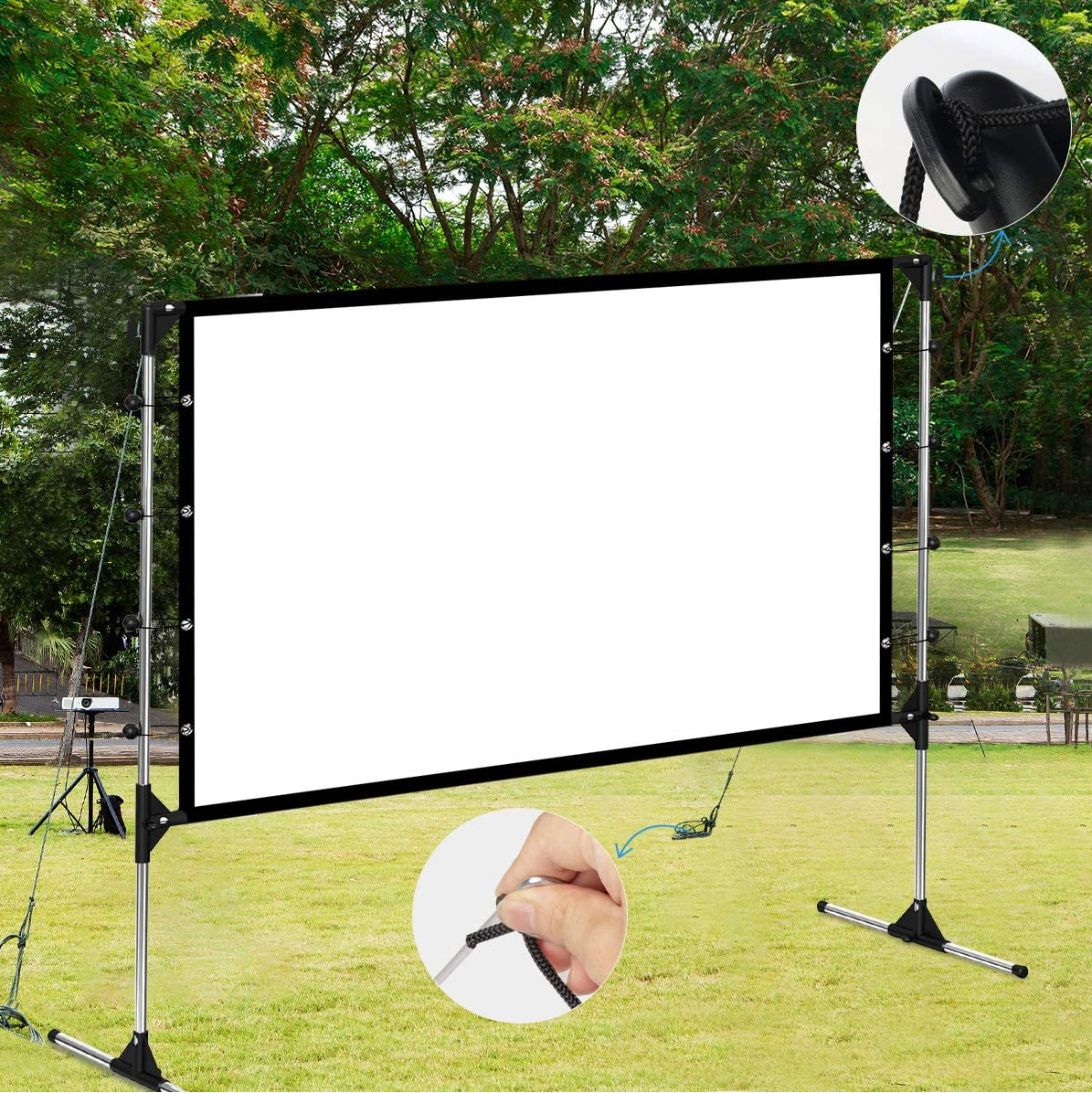
When you mount your projector screen inside, the most you’ll need to do to use is pull down the screen or use your remote control to drop the screen. With an outdoor projector screen, you can opt to mount it on an outside wall of your home so using it will be as simple as pulling down the screen too.
Keep in mind that mounting the screen outside is a little different than mounting it inside. You’ll need to drill into your siding or outside wall, so you may need special tools to do so. If you have cement board, stucco, or vinyl siding, be sure to read up on how to drill into your wall without causing it to crack.
If you choose a portable projector screen, the setup will be as simple as putting the stand together or plugging in the blower. Even if it’s not a windy or rainy day, you’ll want to tether this type of screen to the ground using the included stakes or rope.
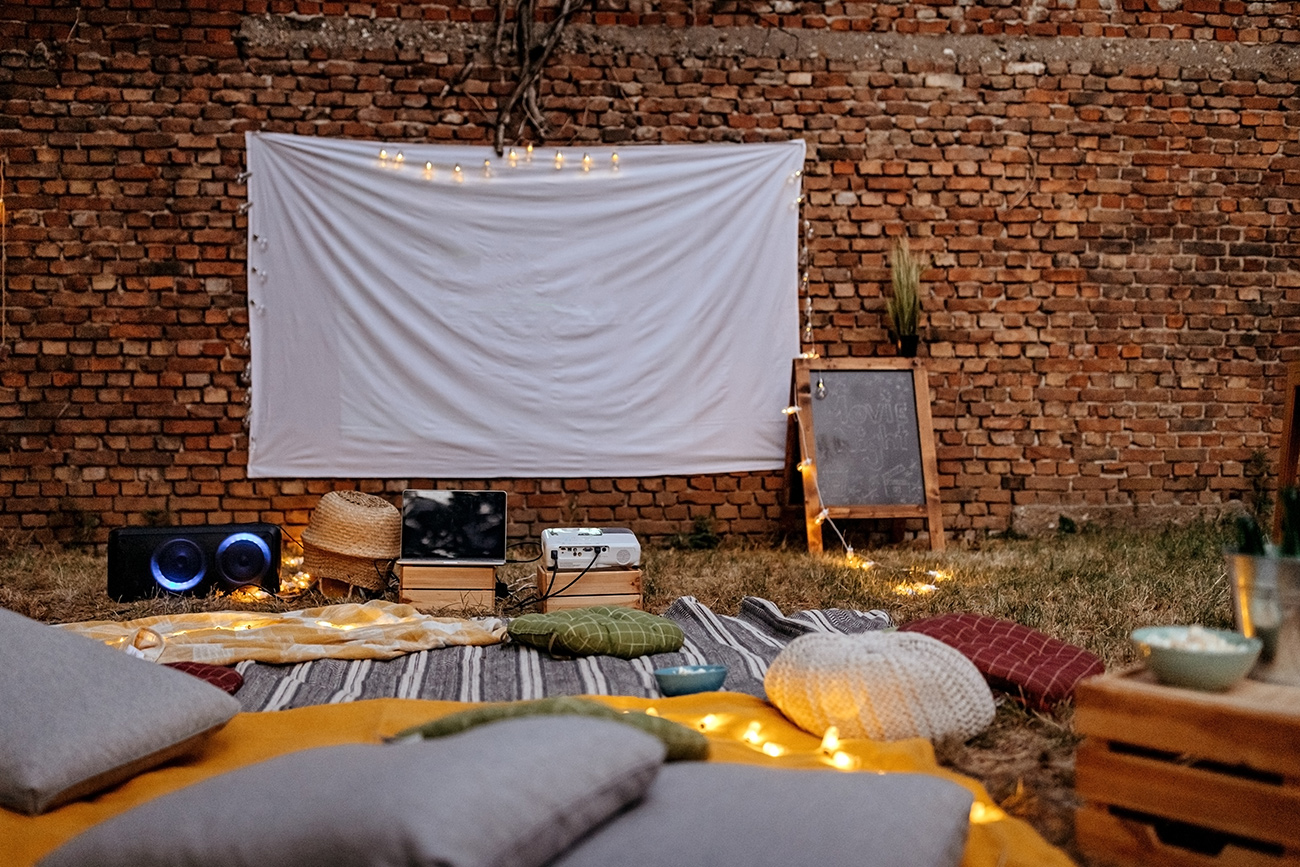
Should you DIY a projector screen?
If you’d like to go the DIY route, you can make your own projector screen. Many people will use a simple white sheet tacked to an outside wall when watching movies outside. You can also place a white sheet on cardboard or poster board and mount it on your wall whenever you need a projector screen.
A sheet or DIY projector screen will work in a pinch, but keep in mind that this type of surface won’t display the best projector images. A sheet can be wrinkly, even if you’ve ironed it, and it’s not designed to be reflective so you get the best image quality. Ideally, you want a screen that assists your projector in producing the clearest, brightest content so everything you watch is as immersive as possible.
Choose the best outdoor or indoor projector screen for you
As you can see, indoor and outdoor projector screens aren’t really interchangeable. Each type is designed for the light in the room and how reflective the surface needs to be. Outdoor projector screens can also be a lot larger than indoor screens and need to be weatherproof to stand up to rain and wind.
To make the most of your projector and for crystal clear image quality inside and outside, you can find the best indoor or outdoor projector screen for you at Best Buy.



